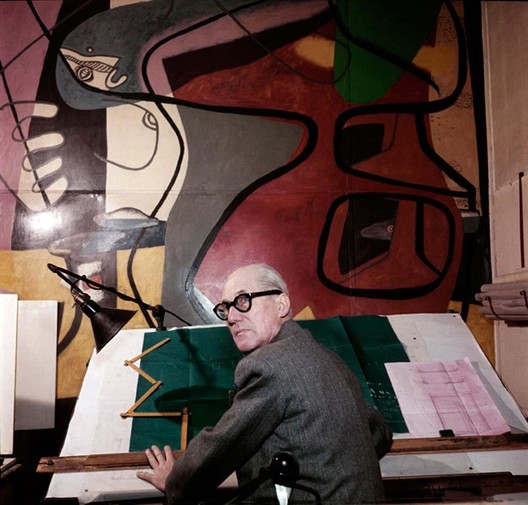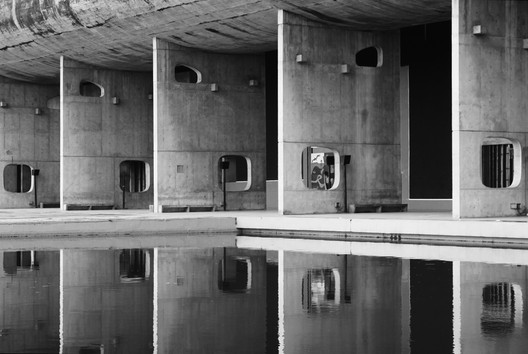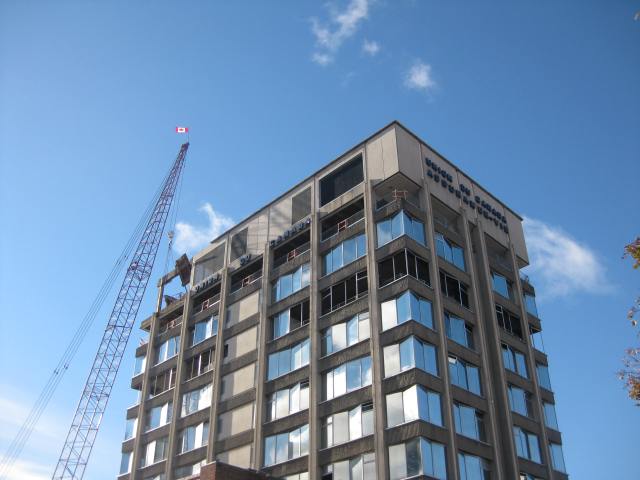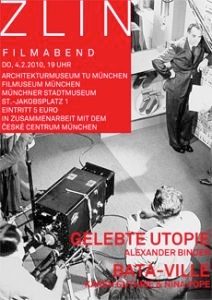Located on the immediate ideological divide of competing urbanisms, postwar Berlin benefited from rival systems promoting divergent models of urban development across the urban fabric of both the communist East and the capitalist West.[1] With two thirds of the city center in ruins, in both the GDR and FDR, state-subsidies were deployed to build grandiose civic architecture: avant-garde cinemas, magnificent concert halls, large-scale housing projects, and futuristic towers. These architectural showpieces — often “designed in opposition to the other side” — acted as “display a picture of material prosperity to the other side” across the wall via a ‘consumer Cold War’[2].
In the East, a monumental 2.3 km-long boulevard, the Stalinallee (now called Karl-Marx Allee) would be designed as a counter-feature to the public and administrative buildings that lined the Prussian processional Unter den Linden in West Berlin. The architect of the Stalinallee, Hermann Henselmann, rejected his modernist creed, and adopted the principles of the Grundsätze des Städebaus, a postwar East German urban planning manifesto favoured by the government of the GDR that flatly rejected the functionalist principles of the Athens Charter and the isolationism of functional modernism.
In contrast with modernist principles of ‘tower in a park’, of autonomous objects puncturing open fields, Henselmann’s Grundsätze-inspired design for the Stalinallee espoused a return to baroque planning. The host feature of this edge of the street was a set of residential blocks of five to seven stories. The design resulted in what Braun (2011) calls “a classic Via Triumphalis with grass verges and squares in a palace-like setting. Classical decorative elements were used on the Stalinallee “to soften and camouflage the simple volumes of the slab and tower.”[3] For Henselmann, the Stalinallee would help shape the city into “a harmonious satisfaction of the right to work, housing, and recreation” though “readable city-form.”[4]
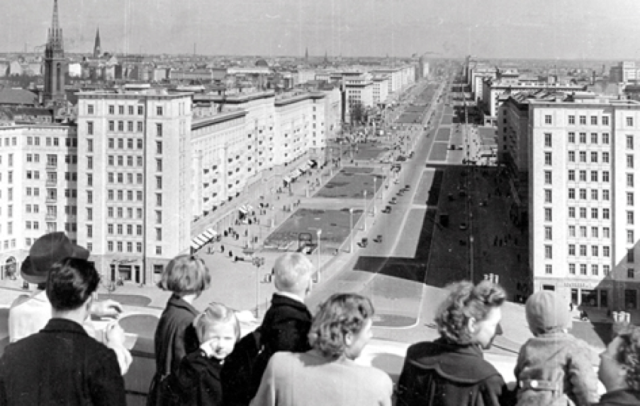
As well as being more conducive to the Soviet Classicism favoured by the new regime from a design perspective, the repurposing of the classical models was also an ideological moment: a “triumphant celebration” in which the “working class exhibits the remnants of the bourgeois aesthetics as battle spoils”.[1] The first housing blocks, such as high-rise Weberwiese contained “luxury suites available for everyday use,” well-adorned entrance halls, reliefs, French windows and balconies meant, literally and allegorically, to be palaces for workers.[2]
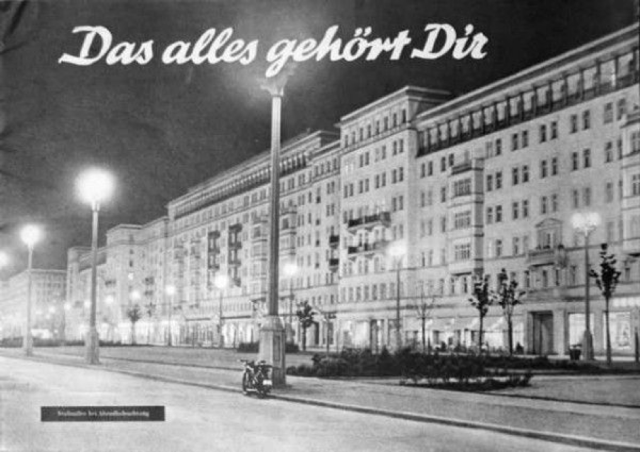
Against the modernist grain, and the camouflage of the tower hidden if the park, Henselmann’s adoption of Grundsätze principles was a reassertion of the “importance of the street as a city making element” where “the street itself of should be the specific object, bypassing the separation of individual cell and infrastructure.” This approach upended modernist housing from “a machine à habiter, into a palace that frames the greenfield site as a theatrical space.”[1]
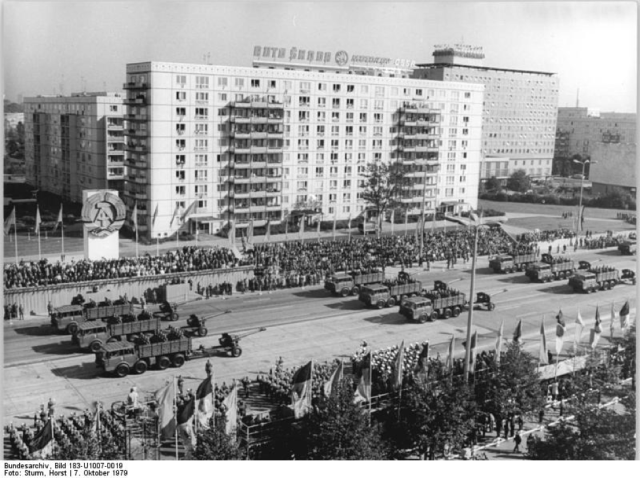
As the model evolved over the decades, the Stalinallee would begin to resemble more closely modernist principles. The second construction phase, and its Plattenbau ceramic-clad, slab-construction housing, was more attuned to the principles of the Athens Charter, yet the grande allée would retain unique street elements from Henselmann’s original design. Among the unique street elements of the later construction were the social infrastructure such as collective care for children in the summer baths and “social buildings” which Braun calls “the most exciting compositions of the modern urban development of the GDR”.[1] These two-storey pavilions, located in the public space directly on the pavement, fully detached from the adjacent Plattenbau housing had large windows framing the activities of stores, café, and restaurants. Luxurious ash, maple, marble, and silicate defined the floors and walls of the spacious interiors, mimicked the well-adorned details of the Weberweise.
Among these gems, the Restaurant Moskau — a “gastronomic embassy” that promoted food from the Soviet Union. It’s “atrium-like cutout entrance” included a “sputnik and a wall-filling museum defined one of the most iconic of these pavilions that defined Henselmann’s imagined streetscape.”[2]
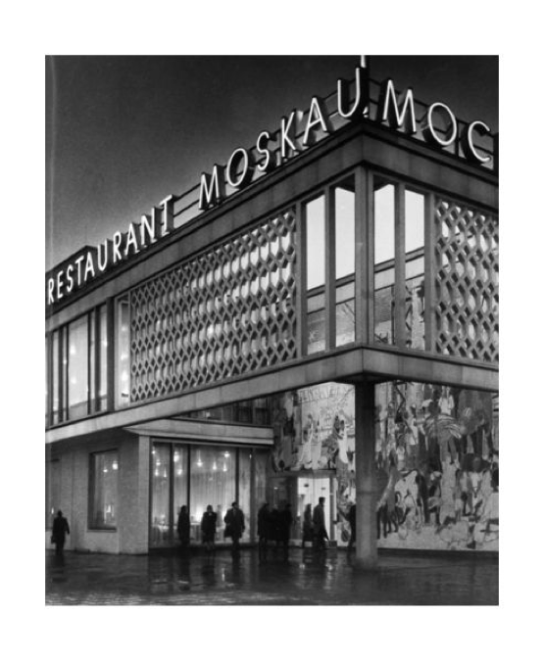
Fittingly, to the idea of projecting images of futuristic modernity, success, and progress of model socialist urbanism, one of the features of the second stage of the Stalinallee was a magnificent cinema — the Kino International.
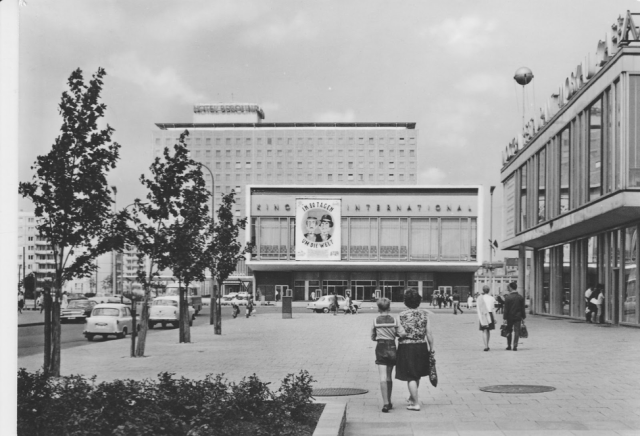 As with the Restaurant Moskau, there was an openness to the street: the ground floor’s glazed façade, open almost for the entire length of the cinema, and its wide chairs of the gold ceilinged high foyer, create an intimate relationship to the street.[1]
As with the Restaurant Moskau, there was an openness to the street: the ground floor’s glazed façade, open almost for the entire length of the cinema, and its wide chairs of the gold ceilinged high foyer, create an intimate relationship to the street.[1]
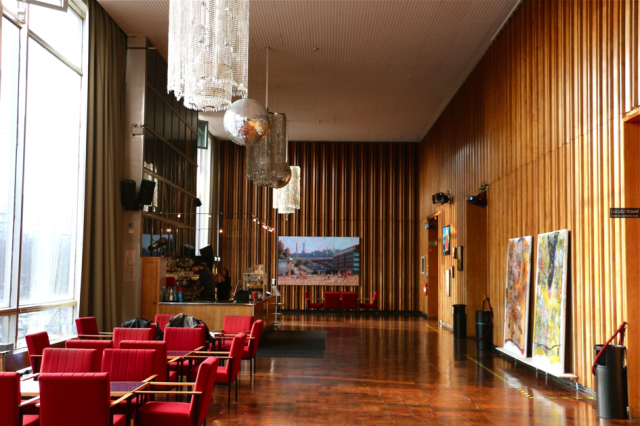 This futurism was equally expressed in the “space design” of East Berlin’s Fernsehturm. Towering above Berlin and 1,207 feet, and clearly visible in the whole city, Berlin’s “Eiffel Tower” was designed as a collective symbol of the success of the GDR’s cold war urbanism, where one could, from a bird’s eye view, absorb the full power of the Stalinallee.
This futurism was equally expressed in the “space design” of East Berlin’s Fernsehturm. Towering above Berlin and 1,207 feet, and clearly visible in the whole city, Berlin’s “Eiffel Tower” was designed as a collective symbol of the success of the GDR’s cold war urbanism, where one could, from a bird’s eye view, absorb the full power of the Stalinallee.
Like the Stalinallee, the TV Tower sites was meant to promote the socialist urban model. The new city center’s architectural design was “planned and remolded to become the showcase of state socialist principles”.[1] Advanced as a “project of national interest” in poems, radio, posters, toys, and a host of other medium, the Stalinallee and the TV Tower were living advertisement for socialist modernity. Accompanied by educational activities, “documentary like campaigns dominated by photos, statistics and diagrams,” exhibits, large-scale models, and later film and television, the socialist urban model was promoted to citizens and visitors. The Stalinallee, Alexanderplatz, and the Fernsehturm were among the sites featured in promotional documentaries lauding the postwar reconstruction of the socialist city center.
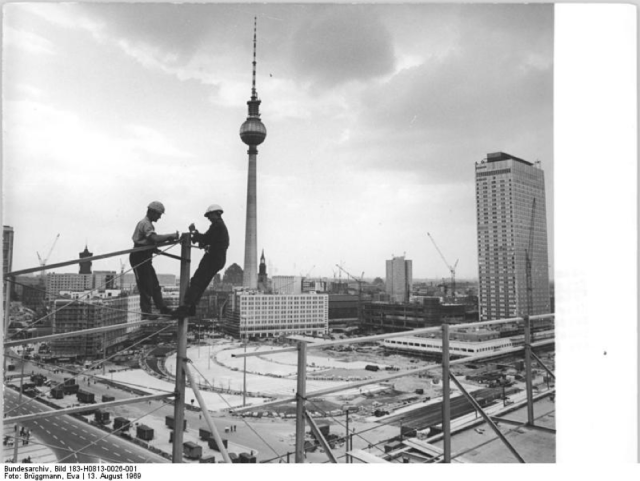
Extending beyond architecture, such promotional efforts depicted “hard-working, determined and forward looking protagonists of the physical construction of a better city” (and a better society).[1] The Stalinallee’s “happy tenants moving into bright new apartments” were depicted in contrast with “grim, old, nineteenth-century Berlin apartment blocks” which were left to further decay as a symbol of capitalist living conditions.[2] As in Czechoslovakia, and other locations, state-produced propaganda served to promoted new socialist housing models and the industrial building techniques such as the prefabricated slabs of the Plattenbau. As key element in the battle between superpowers, these landmarks, their ideological underpinnings, and the promotional activities served to demonstrate the superiority of the GRDs model of urbanism.[1]
[1] Schütz et al, 1996, p.35 from Colomb
[1] (Graft 2001; Colomb)
[2] Colomb : As had been done with Canada’s Regent Park development in 1949
[1] Braun, p. 195.
[1] Braun, p. 194
[2] Braun, p.192.
[1] Guidi, 132, Giudici, p.140
[1] Ibid, 131.
[2] Braun, 2011: 169
[1] As Wise has noted (1998: 44), post-war Berlin was “a cold war showcase for competing architectural visions that mirrored the ideological rivalry between the two superpower blocks”
[2] Colomb, p. 9 Chapter 3).
[3] Giudici, p.140.
[4] Giudici, FN 22.

